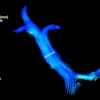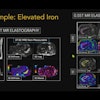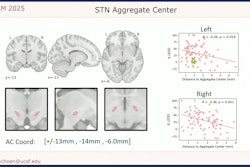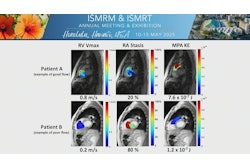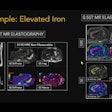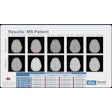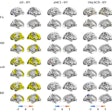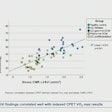HONOLULU – AI-based MR image reconstruction can yield significant energy and time savings, according to a presentation at the International Society for Magnetic Resonance in Medicine (ISMRM) meeting.
As a result, the technology can improve the sustainability of MRI practices, said Judith Herrmann, MD, PD, of the University Hospital Tübingen in Germany during a joint ISMRM/International Society for MR Radiographers & Technologists (ISMRT) forum on May 12.
 Judith Herrmann, MD, PD, of the University Hospital Tübingen in Germany.
Judith Herrmann, MD, PD, of the University Hospital Tübingen in Germany.
Researchers from the University Hospital Tübingen in Germany recently investigated the energy consumption of two 1.5-tesla MRI scanners over four months at a private center in Germany. Their analysis included protocols for the hips, spine, and shoulder.
Several energy-saving strategies were implemented, including optimized protocol settings for these musculoskeletal exams, AI-accelerated sequences, and cooling system optimization, according to the group.
The energy used by the scanners was 31% lower from the shortened workflows and 72% lower from the use of AI image reconstruction compared with baseline measurements. As for time savings, shortened workflows from the optimized protocols were 18% faster, while AI-accelerated image reconstruction was 71% faster.
Overall, these strategies produced annual energy savings per scanner of 54,433 kg of CO2 and annual cost savings of 7,032 euros ($7,801 U.S.) per scanner.
“And we don’t have any impairment of diagnostic accuracy or image quality here,” Herrmann said.
Next, the researchers will be assessing the impact of AI on energy consumption for each MRI sequence at the University Hospital.
“This will enable us to fully investigate the impact of AI-based image reconstruction in the real-world setting [at their hospital],” Herrmann said. “We are really excited about the final results of this.”
She also acknowledged the environmental impact of radiology AI technology, including the cost of AI model development and deployment, as well as data storage requirements.
“It’s right to ask if we need more energy to install them [and] to use them, or if you can get more energy reduction [by applying] them into the clinical routine,” she said. “This issue is complex and multi-layered.”
It’s also important to keep in mind issues such as demographic changes and longer life expectancy, sustainability (including use and waste of MRI contrast agents), and a growing interest in work-life balance.
“Perhaps we do need AI to face these challenges to just help us get more efficient and more sustainable,” she said.
Check out AuntMinnie’s full coverage of ISMRM 2025 here.
